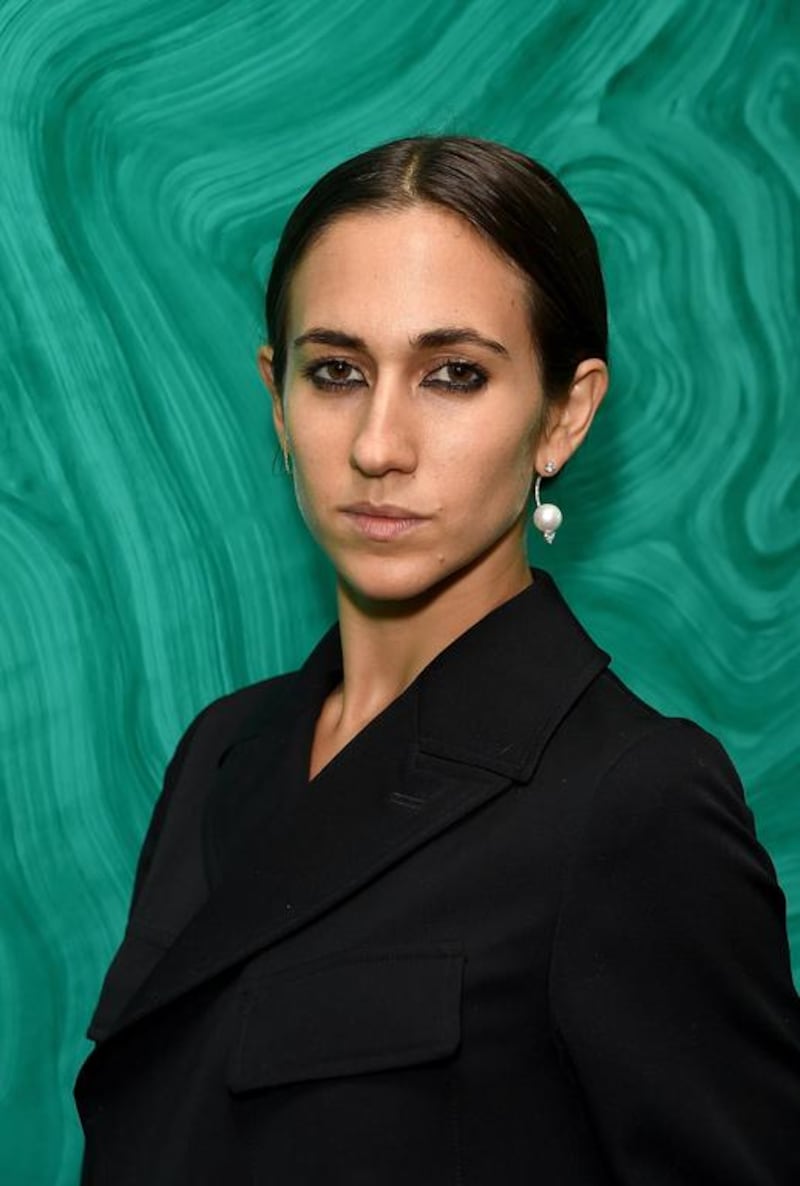Set elegantly in gold or encrusted with diamonds, the eye has always been a best-selling jewellery motif in the Middle East, where customers relate to the culturally rooted protective qualities it is said to hold. So it follows that fine-jewellery designs by Delfina Delettrez, which often feature bold eye icons, are particularly popular in this part of the world. Except Delettrez's pieces aren't actually inspired by the typical blue evil-eye talisman, she tells me.
“It’s not about the evil eye; it’s about a story told to me when I was younger, about ‘lover’s eyes’.” The Victorian tradition, she explains, is about protecting your loved ones when they are travelling. Delettrez recalls learning about women hiding miniature painted or embroidered eyes into their husbands’ garments. “I remember growing up observing men’s clothes – I would look and wonder if they had a hidden eye,” she says.
These miniature eyes became popular in the late 1700s and early 1800s, after the then Prince of Wales reportedly wore a painting of his lover’s eye under his lapel. Later, they became fashion accessories – new versions were bordered in pearl- or crystal-studded frames, and could be worn as brooches, rings and pendants.
Envision a painting of a real human eye, surrounded by a halo of jewels, affixed to a coat or blouse. The overall effect can be somewhat macabre – a theme consistent in Delettrez’s designs, which incorporate skeletons, body parts and creepy-crawlies. While they may send chills up some spines, her glamorous, punk-inspired pieces have an undeniable appeal.
However, don’t mistake the designer’s creations for costume jewellery – her pieces are composed of precious gemstones, including sapphires, rubies, topazes, pearls and, the designer’s favourite, white diamonds. “I like this duplex effect that they have,” says Delettrez. “They are the most romantic and poetic stones that we have, but they used to be called the stones of the warriors, because they are unbreakable.”
While the designer’s aesthetic may be somewhat niche, she hails from one of Italy’s most prestigious fashion dynasties. Her mother, Silvia Venturini Fendi, is the creative director of accessories at Fendi, and the only member of the Fendi family to still work at the fashion house, which is under the creative direction of Karl Lagerfeld.
Delettrez embraces her Fendi roots with finesse. When she visited Bloomingdale’s in The Dubai Mall recently to launch her latest collection, the fashion heiress was dressed in head-to-toe Fendi. A striped ankle-length dress in hunter green might look matronly on some, especially when styled with a severe bun at the nape of the neck, but the designer accessorised it with embellished floral mules from the Fendi autumn/winter 2016 runway show, the brand’s signature Baguette bag (a silhouette famously invented in 1997 by her mother) and a single earring in one ear – from her own brand, of course.
Delettrez’s new collection, available exclusively at Bloomingdale’s - Dubai, is displayed on ceramic body parts painted in white. White ears are pierced with pearl-topped illusion earrings, while diamond-studded rings are wrapped around index fingers. The body-part props are a clear ode to the jewellery designer’s eccentric aesthetic, which includes the heavy use of lips, noses, eyes and skeletons.
Delettrez tells me that the first piece she ever created featured a ruby stone, held by two skeletal hands. She designed it while she was pregnant with her daughter, and was struggling with thoughts about death. “I guess when you give life, you are asking yourself all of these questions about death; you start kind of being scared of it, and that’s why I had this sort of not-very-maternal attitude,” she says.
“I was having my daughter at 19, and you know those are the years of rebellion in a way, and I guess having no control over my body, seeing it just expanding, there was nothing I could do. I wanted to put some control into something.
“My first approach had a very personal motivation. I wanted to create a piece as a protection, as an amulet, to wear throughout my pregnancy and then to offer to my daughter the day she was born,” she explains. “This is something very Italian, something that my family does every time a new child is born.” Delettrez adds that her daughter’s was a particularly special birth, as she was the first female of the fifth generation of the Fendi family.
Delettrez is candid about the pressure and expectations that come with the Fendi name. “When you work in a family business, you always ask yourself: ‘Am I here because I’m talented, or am I here because that’s what they expect me to do?’’’ The young designer made a very deliberate decision to avoid attaching the Fendi title to her own eponymous brand, even though she is known to some as Delfina Delettrez Fendi – and to others, just as Delfina Fendi.
Still, being part of the Fendi family has taught her many things about working in fashion and heading up a business. “I was prepared when I opened my brand and I knew I would have to make many sacrifices and be very disciplinata [disciplined],” she says.
“They also introduced me to the beauty of experimentation, so I’m not afraid of mixing rich and poor, or mixing materials that don’t even meld,” she says. “Really experimenting and pushing the boundaries more and more – this is what I’ve learnt from them.”
Read this and more stories in Luxury magazine, out with The National on Thursday, February 2.
hlodi@thenational.ae





